Media | Articles
6 cars that flopped outside their home markets
2023 marks 50 years since the lovely Volvo P1800 ended production. Oddly enough, two other cars in this list exited stage left in 1973: The Sunbeam Minx and the Opel GT. This article originally ran in 2019 but, given those coincidences, we couldn’t resist sharing it again. —Ed.
The iconic WWII Willys Jeep and its later English rival, the Land Rover, have been sold around the world for almost 80 years. They make sense pretty much everywhere.
However, some cars just don’t translate to other countries, even if they were hugely successful where they were born. These include the tiny 1948–1990 two-cylinder Citroën 2CV and the 1959–2000 British Motor Corporation Mini. Based on their domestic reputations, each sold more than five million copies in 40 years. Overseas, they appeal to contrarians, who don’t care that they are small and slow.
Cross-cultural efforts have produced an endless list of unsuccessful transplants. Whether the brand name is changed or not, they just don’t fit, and some of the more bizarre attempts have been quite recent. Even if the cars were mechanically sound, a lack of parts and weak service support outside their domestic markets often proved insurmountable. Here are 6 such cases where cars in other markets got lost in translation.
1963–73 Sunbeam Minx and Arrow, Plymouth Cricket, Simca 1000

Chrysler leaped into the European market in 1964 and immediately wondered which vehicles from its overseas catalog could transfer to the United States. The Shelby Cobra–like Sunbeam Tiger was the fastest option, packing a V-8 stuffed into an Alpine roadster. But Chrysler didn’t have a suitable substitute for Ford’s lightweight 260-/289-cubic-inch engine found in the Cobra, so the Tiger died off in 1967.
Marketplace
Buy and sell classics with confidence
Moving downmarket, Chrysler branded British four-cylinder Hillman Minx and Hunter sedans as Sunbeams. The Hunter sold almost 500,000 examples worldwide in 10 years, but only a handful reached the U.S. in 1967, badged as Sunbeam Arrows. The underpowered Minx sedan was imported in 1966–67, with the option of a pathetic automatic transmission. French Simca 1000-cc sedans dribbled into the states from 1963–69, but few survive, despite 1.6 million sales elsewhere. Hillman Avenger sedans and wagons arrived in 1971 as Plymouth Crickets to fight the Pinto and Vega, but the European models had little support. Only 27,682 Crickets were sold in three years, and by Jiminy, it’s virtually extinct today.
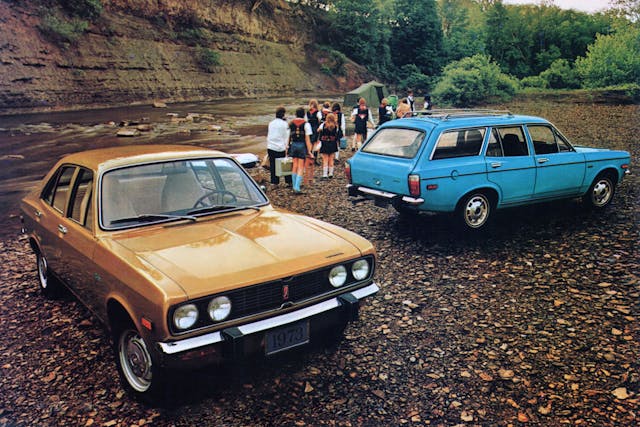
In a curious turn of fortunes, Chrysler was successful with Mitsubishi imports in the 1970s. It sold more than 300,000 Dodge Colts, Challengers (!), Plymouth Champs, Arrows, and Sapporos while developing its own Chrysler Le Baron, Plymouth Reliant, and Dodge Aries K-cars. Few 1970s captive imports survive and 1980s K-cars are scarce, though no one cares.
1991 Lotus Elan M100
Sturdy if bland, the Lotus Elan M100 was reputedly penned by a Japanese team competing for the design of the Mazda Miata. Unfortunately, the team lost the bid to Japanese expat Tom Matano, who spent years working for GM before moving to Mazda’s North American arm.
The Elan offered a 165-hp, 1588-cc, turbocharged DOHC fuel-injected Isuzu four-cylinder engine, which drove the front wheels via a five-speed manual gearbox. The car weighed 2249 pounds and was capable of 135 mph. While it was quick and handled well, front-wheel drive was anathema to Lotus fans; in 1991, only 528 were sold in the U.S., at an uncompetitive MSRP of $33,900. Worldwide production totaled only 3855.
1975–76 Chevrolet Cosworth Vega
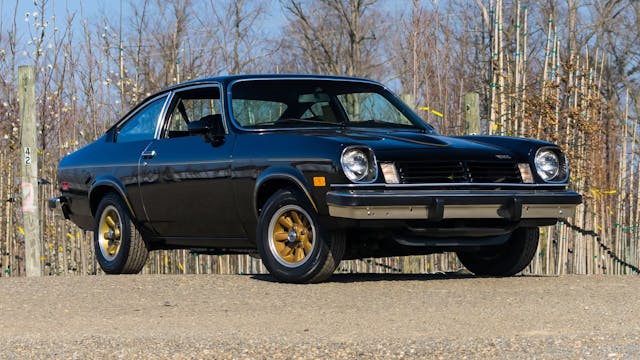
When the Chevrolet Vega was launched in 1971, John Z. DeLorean demanded a twin-cam version aimed at the BMW 2002 and the Alfa Romeo GTA, both of which competed in SCCA and in various European circuits. Keith Duckworth of Cosworth Engineering designed a DOHC engine, 1000 of which were required for homologation. Cosworth’s engine developed 290 hp at 9000 rpm, but the high-silicon alloy blocks kept breaking, and Duckworth quit.
Cosworth’s Weber DCOE carburetors could not be smogged, so the four-cylinder was fitted with Bendix fuel injection and its crankcase reinforced for 1974. But emissions demanded 8.5:1 compression instead of the planned 12:1 ratio. Horsepower plunged to a miserable 110 hp. Then the motor failed EPA testing and the project was delayed until 1975.
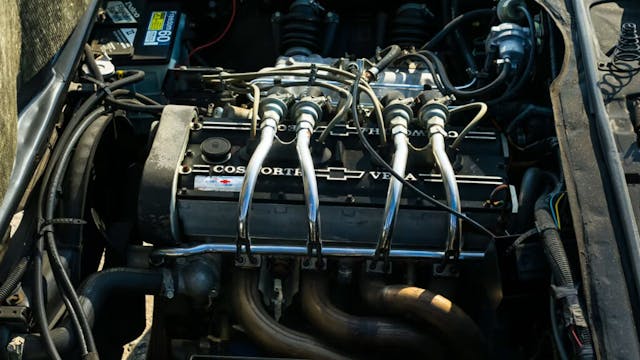
All 1975 Cosworth Vegas were black with gold trim, but cost $5916—double the cost of a standard Vega. Each CosVeg had a four-speed gearbox, unique alloy wheels, full instruments in a gold-tinted dashboard made of turned aluminum, and a numbered dash plaque. 1976 Cosworths came in seven other colors: Antique White, Dark Blue Metallic, Firethorn Metallic, Mahogany Metallic, Dark Green Metallic, Buckskin, Medium Orange, and Medium Saddle Metallic. A five-speed manual was optional.
The muscular price tag and minimal performance meant that only 2061 Cosworths were built in 1975 and 1447 in 1976. Of 1492 leftover engines, a few were used for warranty, 500 disassembled for parts, and the rest scrapped for a tax write-off. Ironically, present-day engine technology can deliver on Cosworth’s original promise.
1970–73 Opel GT
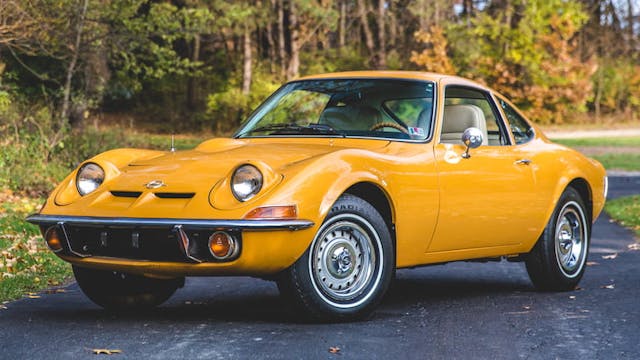
When the Opel GT concept was shown at the 1965 Frankfurt and Paris Motor Shows, it was hailed in Europe as a mini Corvette and reputedly delayed until the strikingly similar C3 Corvette was ready. The GT’s running gear came from the lowly Kadett, but the elegant bodies were built by Brissonneau and Lotz in Paris and shipped to Germany for assembly. Most had a 90-hp, 1897-cc, “high-cam” (almost-OHC) engine. In all, 103,373 GTs were built. About 70,000 were sold in the U.S. by puzzled Buick dealers grateful for an automatic option.
The GT’s layout was intricate. Front suspension was by transverse-leaf with a live rear axle located by coil springs, trailing arms, and Panhard rod. Brakes were disc/drum and steering rack-and-pinion. Hidden headlights were manual and flipped over sideways. There were four round taillights but no opening trunk, for structural rigidity. Road & Track reported 0-to-60 mph in 10.8 seconds, but wind-tunnel research and ram-air induction enabled a top speed of 115 mph.
Bash-bumper laws of 1974 doomed the GT, which suffered chronic rust issues. The 1.9-liter engine had a tiny three-quart sump, so oil levels had to be checked regularly. Those flip-over headlights demanded flexible wiring, but engine heat hardened the harnesses’ plastic insulation, which cracked and led to fires. With so many built by Opel, spares do exist; even better, wrecking yards and hoarders rarely crush these cars.
Volvo P1800 and Jensen

Volvo’s first sports car was the disastrous P1900 roadster in 1955. A fiberglass blob with a pig snout, one tester listed 29 “must fix” problems. Volvo’s CEO Gunnar Engellau took the P1900 on a 447-mile trip and canceled it on his return. Only 68 examples had been sold.
The 1961 P1800 sports coupe was much better. Derived from Virgil Exner Jr.’s Chrysler concepts built by Ghia in the 1950s, the design resembled Ghia’s Thomas Special and Volkswagen’s Karmann Ghia coupe: It wore fins, a curved side spear, and “cow horn” front bumpers. A kitschy interior featured chrome and stylized gauges.
With its factories already running at capacity, Volvo contracted with UK-based Jensen to build the first 6000 examples of the P1800. However, chronic rust issues in the unibodies of the Jensen-built cars forced Volvo to return production to Sweden in 1964. Now called the 1800S, the car’s grille was simplified and its bumper straightened. The curved front bumpers and side spear vanished the next year.
The 1800 was saved from obscurity by actor Roger Moore, who drove one in the seven-year British TV series The Saint. The network wanted a Jaguar E-Type, but Sir William Lyons refused. Volvo’s 1800 proved mechanically bulletproof, with a 1.8-liter B18, four-cylinder, OHV engine, front disc and rear drum brakes, independent front suspension, and vault-like unit construction. Production lasted until 1973. Retired teacher Irv Gordon drove his 1966 model 3,250,257 miles.
Saab 9-2X, 9-7X, 9-6
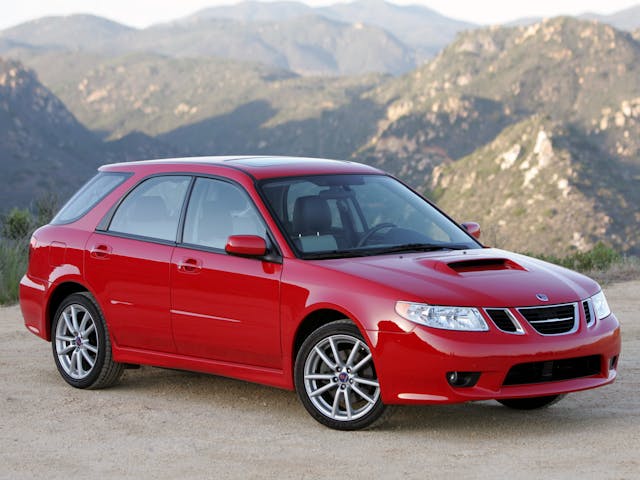
Considering Saab was such a well-defined brand, it’s amazing how many bizarre, rebadged vehicles have carried the name since the egg-shaped 92 was launched in 1950. Never mind the Triumph engine in the 1967 Saab 99; the Saab 600 of 1978 was really a Lancia Delta, while the 9000 of 1985 shared mechanicals with Alfa Romeo 164, Fiat Croma, and Lancia Thema. GM bought 50 percent of Saab in 1989 for $600 million and that resulted in the Opel-based 900 of 1994. Both the 900 and 9000 were renamed in 1997 as the 9-3 and 9-5.
When GM bought the remaining 50 percent of Saab in 2000 for $125 million, it cast around for other ways to monetize the brand. Since GM owned 20 percent of Subaru (Fuji Heavy Industries), an obvious choice was the all-wheel drive, turbocharged WRX Impreza wagon. The five-door Subie was face-lifted forward of the windshield, weighed down with luxury options, improved in numerous mechanical aspects, and saddled with a price tag $3000 higher than the Subaru’s. Launched in 2004, the 9-2X’s best year was 2005, when 5940 were sold. That figure faded to three in 2008. The total count: 9284.
The Saab 9-7X was an expensive Saab variation of the Chevrolet Trailblazer, designed to replace the Oldsmobile Bravada. It debuted in 2005 and managed to catch a bit of the SUV wave, selling 85,994 units before succumbing in the 2008 crash, with 1209 leftovers sold in 2009. Mercifully, perhaps, plans to sell a Saab-badged variation of Subaru’s unpopular Tribeca SUV (badged as the 9-6) were shelved when GM sold its share in Fuji Heavy Industries in 2005. The 9-6 plan was never officially revealed until a prototype was added to the Saab museum in Trollhattan in 2011.
***
Check out the Hagerty Media homepage so you don’t miss a single story, or better yet, bookmark it. To get our best stories delivered right to your inbox, subscribe to our newsletters.
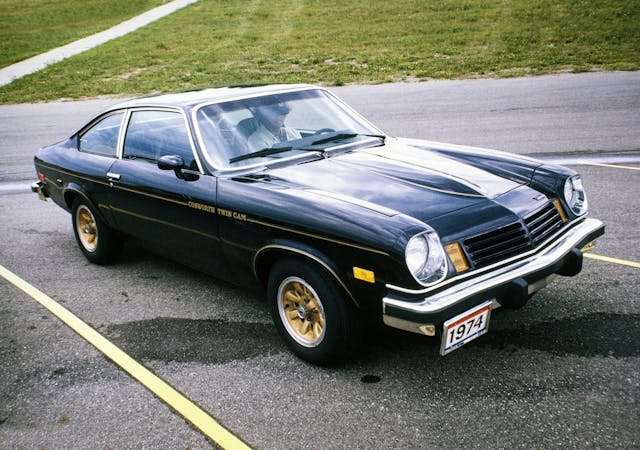















Incredible the amount of misinformation here on the Opel GT. Who wrote this?
First of all “1970 – 73”? Production was 1968 -1973.
Next: According to documentation at the Opel Museum design work on the GT began in 1961 with 2 fully operational prototypes being shown (like you said) at the 1965 Frankfurt Auto Show. (FYI GM owned a controlling interest in Opel from 1929 until 2017.) Research GM’s “Project Opel” for more information as far as it’s relationship to the C3 Corvette 1968-1982. Those that refer to the Opel GT as a “mini Corvette” are very uninformed. Those that imply that a car who’s design started in 1961, was shown in 1965, in production in 1968 yet “copied the design of the 1968 C3 are just foolish.
A dealer told me that a Chevy dealer was only allowed 1 Cosworth Vega when they came out. Dealers were limited to $350 profit for the car but they also had to buy special tool sets which GM charged more for than the profit margin.
The Saab’s that were rebaged vehicles were not different enough to attract attention. The Saabaru was a slightly nicer RX wagon though.
I guess this proves that there really is intelligence abroad.
I love the little Opel GT. An old love had one & it had one of the most precise shifters around. In thinking back to then, so did my old love. I sure do miss them both.
My first wife took mine in the divorce. I miss the car. Good riddance to the woman.
I always assumed a Plymouth Cricket was a re-badged Dodge Colt. Someone in college had one in 1976. Thanks for the information.
I had a ‘79 Plymouth Sapporo, back in the day. It was nicely equipped, fun to drive, and very nicely styled. I’d look for one, if I had more garage space, but most are rusted away anyway.
I’ve always liked Chevy styling, including the Vega. A well-sorted Cosworth would be a kool hobby car.
Wow, what an exercise in human psychology! Why can’t we bottle the same _______ and make it sell like they do?
When my VW was stolen, I needed a replacement ASAP. In ’68, VW’s were not always readily available. So I bought an Opel Rallye – a Kadett with flat black stripes and driving lights. The solid lifters made so much clatter that the radio was useless. It also blew out rear wheel seals every 3 months. When my warranty was about to run out after two years, the Buick dealer said that I would be on the hook for future seal issues. Got rid of it ASAP and went back to VW.
Engines like those described for the Cosworth but didn’t make the cut are very interesting to me, anyway. Exotic, complicated, small high rev’vers (if that’s a word) always intrigued me. We used to say…..if you ain’t got the cubes, you gotta have the revs. I guess that was the USA vs. European view
The little Vegas were great little cars except they were rustickles where salt was used in the winter. But what do you expect from a cheap car like that. GM did not design them to last.
I remember when the Vega went on sale. After I saw several new ones on the street, I thought to myself, ” Why would anyone design and sell a new car to have rust holes on the top of the fenders?” After that I hoped that GM was joking, then I heard about the self destructing engines.
I had a 71 Hillman Avenger, aka, Plymouth Cricket. A mighty 1500cc single carb engine powered this car quickly through the autocrosses I ran beating such cars as Cortinas, Corvairs and even a Corvette. I regular ran through the hills with a buddy in a 68 Cortina GT. He could out drag me but I could out brake and out corner him. I put 65000 miles on in 3 years as a college student with no more than the blocker ring on second gear synchro needing a changeout. Too much speedshifting. I would have been pleased if it had reclining seats and at least 30hp more but it was a fund and reliable car no matter the season or location.
Is that a puddle of coolant under the Cosworth in the lead photo?
Richard—good for about 3 yrs If you were gentle-
2017 Cocours d’LeMons in Monterey, they somehow arranged a display of 6, count ’em 6 Cossi Vegas. That was quite a sight to see six of those black and gold suckers lined up in a row, hoods open to reveal the quirky Cosworth power plant.
Yes indeed, there’s a photo of “Cossies” on line but I cannot get a URL to post nor edit.